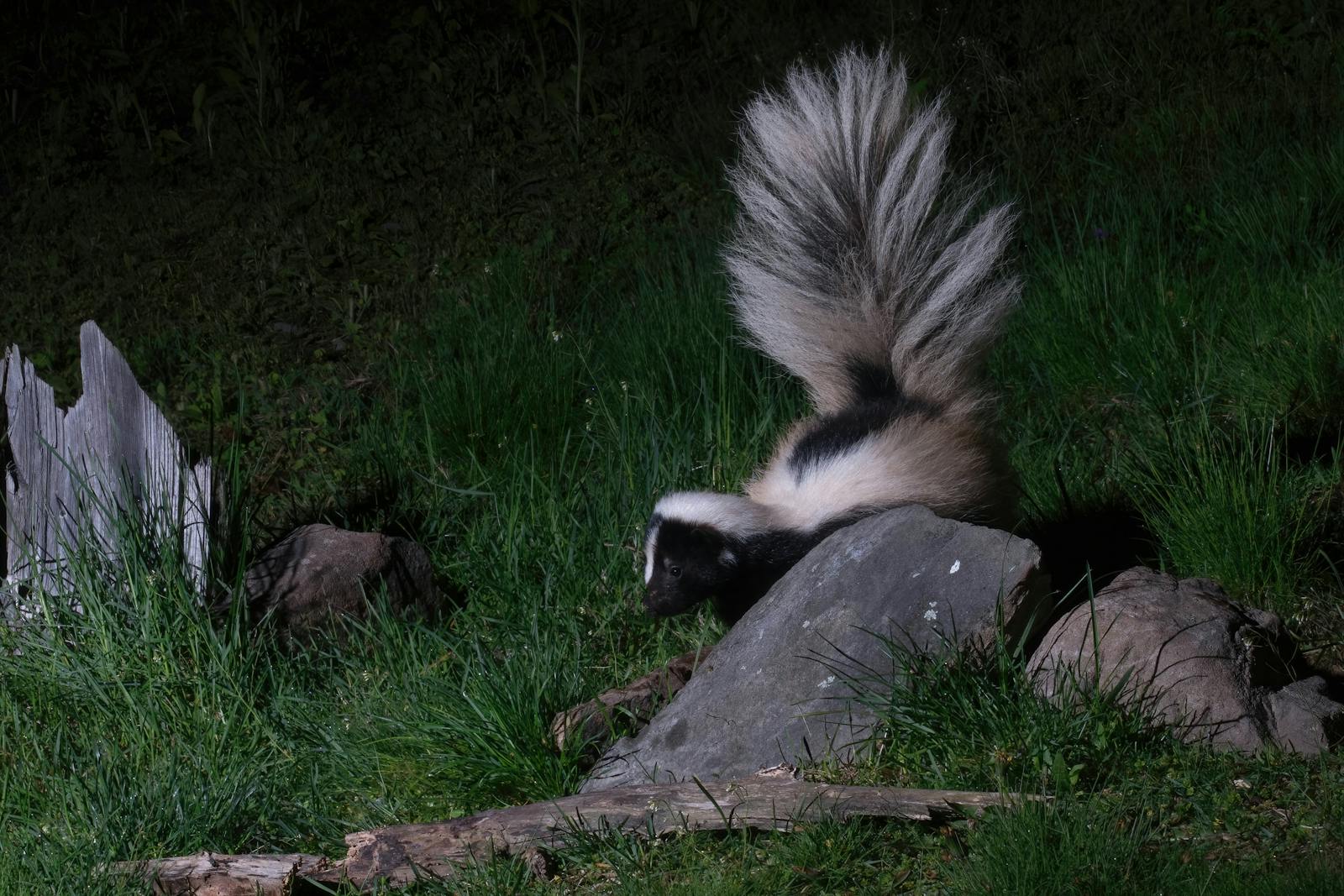By Rory Hale – REALTOR®, Rural Properties & Acreages in the foothills of Alberta
The Skunk: Alberta Foothills’ Striped Survivalist
So you're walking through the forest near your favourite pond, enjoying the crisp evening air, when suddenly you spot it — a flash of black and white weaving through the tall grass. You freeze, heart pounding, where is your dog? You quickly grab his collar as a skunk wanders up the hill beside you, blissfully unaware of the minor heart attack it just caused. You hold your breath (just in case) and thank your lucky stars it’s heading the other way.
Too many times your dog has seen them before you did, yuck.
Living in the Alberta foothills means sharing your space with all sorts of wildlife, and skunks are among the most misunderstood residents. As a rural realtor, I’ve learned that part of the charm of acreage living is learning to coexist with critters like our striped friends. Let me tell you a story that perfectly captures their role in the foothills’ wild tapestry.

A Striped Surprise: One evening, while showing off our property to some friends from the city, we heard a rustle near the compost heap. Out came a skunk, nose twitching, tail high — a fluffy warning flag. My friends froze, and I couldn’t help but laugh at their wide-eyed panic.
“Don’t worry,” I whispered, “as long as we keep our distance, she’ll go on her way.”
Sure enough, after a few sniffs around the garden, the skunk trotted off, leaving behind nothing but relieved sighs. Later, as we wrapped up the tour, I pointed out that while skunks might be a little pungent, they’re also harmless and surprisingly beneficial.
Skunks are known for their distinctive black-and-white coats, which serve as a warning to potential predators. Their infamous spray is a last resort — they only unleash that potent defence when genuinely threatened. Otherwise, they’re calm, curious foragers.
Believe it or not, skunks are invaluable to the environment. They’re nature’s pest control experts, feasting on beetles, grubs, and insects that can damage crops and gardens. Their diet also includes small rodents, berries, and even the occasional bird egg.
Interestingly, skunks are also avid honey lovers — they’ll raid beehives and eat both bees and honeycomb. Their thick fur helps protect them from bee stings, making them surprisingly fearless around buzzing hives. They can help manage overpopulated bee colonies naturally.
While they dig around lawns looking for grubs, they’re actually helping aerate the soil — free gardening help, whether you asked for it or not!
Skunks aren’t picky when it comes to setting up camp. They prefer burrows abandoned by other animals, like badgers or ground squirrels, but will also dig their own dens if needed. You might find them nesting under porches, sheds, or woodpiles — anywhere cozy and secluded.
They don’t migrate; they’re year-round residents in the foothills. During winter, they may bunk down together to stay warm, but they don’t truly hibernate. Instead, they enter a state of torpor, conserving energy until warmer weather returns.
Despite their formidable defence, skunks aren’t invincible. Owls, especially the great horned owl, are their primary predators since they’re immune to the spray. Coyotes and foxes may also take the risk, but most mammals give skunks a wide berth.
Apart from their iconic stripe and, well, unforgettable defence mechanism, skunks are surprisingly good neighbours. They control pests naturally and rarely cause trouble unless provoked. Once you understand their habits, they’re easy to coexist with — just give them space and respect their boundaries.

Living with Skunks: While skunks aren’t aggressive, they can be problematic if they decide your crawl space looks like prime real estate. Here’s how to live in harmony and avoid conflict:
Secure Your Trash: Keep garbage sealed and compost piles contained.
Block Access: Install skunk-proof barriers around decks and sheds.
Light It Up: Motion-activated lights can deter nighttime foragers.
Avoid Surprises: Make noise before stepping into dark corners, so you don’t startle a napping skunk.
One of the best parts of living in the Alberta foothills is embracing these wild encounters. Learning to share your space with creatures like skunks reminds you that rural life is about balance — respecting nature while enjoying the peace and beauty it brings.
If you’re ready to experience the charm of living alongside wildlife, give me a call. I’ll help you find the perfect foothills property where you can wake up to birdsong, breathtaking views, and yes, the occasional skunk sighting — without losing your sense of humour.
Looking for your own slice of nature-filled paradise? Contact me today to explore rural properties where life is wild, wonderful, and a little bit skunky — but always memorable!
Rory Hale - REALTOR®
CIR Realty
403-585-6552
RHale@CIRRealty.ca


